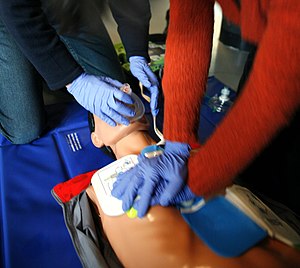First Aid Kits for Paddlers
A Guest Blog by Kristen Beck
If you intend to paddle along on the Indian River Lagoon Paddle Adventure, you must consider first aid kits. You need to think about your safety and rescues. If you are out paddling you are in the wilderness, even on the Indian River Lagoon. In general it takes one hour for every quarter mile you are away from a trail head, boat landing, or somewhere that an emergency vehicle could meet you, to get an injured party back. It could take longer depending on mode of injury or degree of incapacitation. I highly recommend that you take a first aid and safety course. A wilderness first aid course is excellent but a basic course is better than nothing.
A good first aid kit doesn’t need to break the bank. Put together a dedicated kit that becomes part of the essential gear that you never leave without- paddle, life jacket, first aid kit- you need them all. If you have it you might not ever need it, but that one incident when you need it and don’t have it will suck, so pack it!
Here are some tips on how to make your own first aid kit for the wilderness. You may want to increase the amount of supplies depending on how many will be traveling with you. Encourage your paddle buddies to carry their own kits.
Storage
You will want something lightweight and waterproof. Ziploc bags are great for keeping items clean and organized, but they are NOT waterproof. Invest in a dry bag and mark it with a huge red cross, so anyone will recognize it as a first aid kit. Dry boxes are good but I find a medium size dry bag works best.
Size
How big of a first aid kit you create depends on a few things. Is it just for you or for a group traveling together? Are you simply hiking and camping or will you be partaking in other adventurous activities like rock climbing or rafting? If so, you may want a larger first aid kit as serious injuries need more attention.
What to Pack
Here is a suggested list. You can always add or subtract items depending on your personal needs.
Basic components:
- Small gauze pads
- Large gauze pads
- Hand sanitizer
- At least 2” gauze roll – 1 or 2 rolls
- Triple antibiotic ointment
- Povidone/iodine solution
- Chemical heat and cold packs
- Baby wipes
- Scissors
- Tweezers
- Latex gloves
- Hydrogen peroxide bottle
- Bottle of clean water
- Maxi pads – 3 or 4
- Emergency space blanket
- Clean trash bags, 3 or 4, can be used as poncho, shelter, and to retain body heat
- Duck tape – 1 full roll, replace as you use it. DO NOT waste your money on water proof bandages. They do not stay when wet, and paddling is a wet sport
- Waterproof tape
Medications
- Antacid
- Antihistamine (Benadryl, etc.); allergic reactions, insomnia
- Anti-inflammatory (Ibuprofen, Acetaminophen); inflammation, pain
- Hydrocortisone cream (soothes allergic skin)
- Potable Aqua (iodine water treatment)
Make sure your kit is accessible!!! Do not pack in the very rear hatch buried under everything. I like to have mine visible in a day hatch or on the deck where I can get to it quickly. If you are ashore taking a hike take it with you. That is when you will most likely need it.
Be sure to inspect your kit often, preferably before every trip. Make sure the gear is clean and supplies are in good condition. Replace expired medications as needed and add items that would have been helpful on your previous trip Also be sure to tell others you are traveling with where your first aid kit is, in case you are incapacitated. Encourage your friends to take a first aid and safety course.
If you aren’t comfortable making your own fist aid kid, pre-packaged kits are available online for purchase.
Tell people where you are going, when you are leaving and when you expect to be back. Take a cell phone with you- you can turn it off so you don’t disturb the wilderness setting but will have it if you need it. Most paddling locations here in the area you will get some coverage but you may have to move around. Have the appropriate numbers programmed into your phone; know where you are- when you call for help you need to be able to give the 911 operator your location.
Be prepared and you will have a better outdoor experience!
Kristen Beck, Director
A Florida Outdoor Center- Connecting people with nature thru outdoor activities and bringing nature in to those who can not get out.
www.AFLOC.org
772-202-0220
facebook at www.facebook.com/kayakkristen
All content in this blog, including writing and photos, copyright John Kumiski 2013. All rights are reserved.
|

Recent Comments